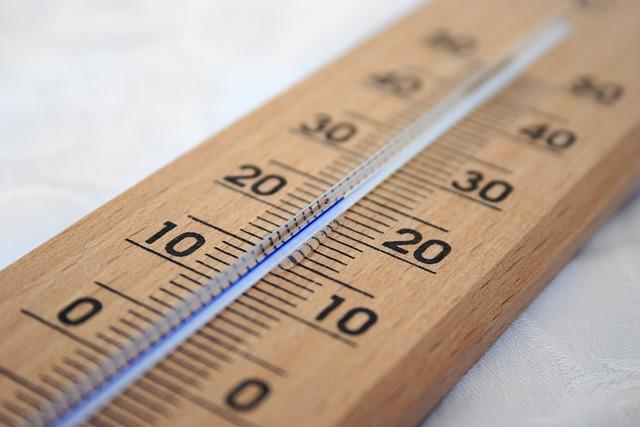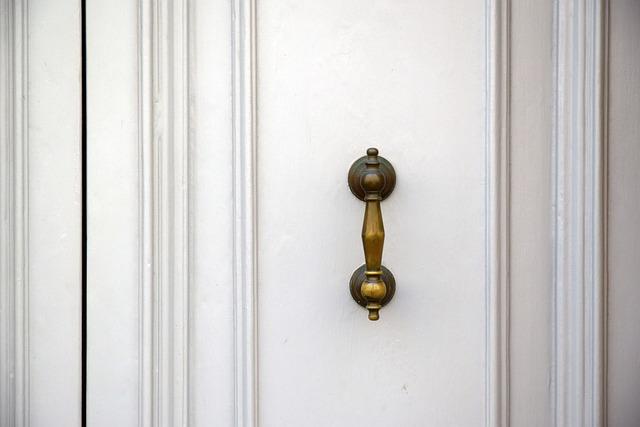Best Ice Bath Temperature: Finding Your Perfect Chill Zone

Are you ready to take the plunge and discover the ultimate refreshing retreat for your post-workout routine? Look no further, as we dive into the world of ice baths and explore the elusive quest for the best ice bath temperature. Finding your perfect chill zone can be the key to optimizing your recovery and unleashing your body’s potential. So, join us as we embark on this adventure, armed with knowledge and confidence, to uncover the optimal icy haven that will have you feeling rejuvenated and ready to conquer any challenge.
Contents
- 1. The Physics of Cold: Understanding the Science behind Ice Bath Temperatures
- 2. Exploring the Therapeutic Benefits: How Different Temperatures Impact Post-Workout Recovery
- 3. Tailoring Your Chill: Factors to Consider when Selecting the Ideal Ice Bath Temperature
- Factors to Consider when Selecting the Ideal Ice Bath Temperature
- 4. The Goldilocks Zone: Finding the Optimal Range for Maximum Benefits
- 5. Fine-Tuning Your Cold Therapy: Adjusting Temperatures Based on Individual Tolerance
- 6. Pushing the Limits: Pushing Beyond Conventional Temperatures for Enhanced Performance
- 7. Safe and Sensible: Guidelines for Maintaining a Healthy Ice Bath Routine
- 8. Harnessing the Power of Contrast Therapy: Combining Ice and Heat for Superior Recovery
- 9. Beyond the Basics: Exploring Advanced Techniques for Temperature Manipulation
- 10. Navigating the Journey: A Step-by-Step Guide to Discovering Your Personal Perfect Chill Zone
1. The Physics of Cold: Understanding the Science behind Ice Bath Temperatures
The Science behind Ice Bath Temperatures
When it comes to ice baths, finding the perfect temperature can make all the difference. Understanding the science behind cold temperatures can help you determine the best chill zone for your ice bath experience. Let’s delve into the physics of cold and uncover the secrets behind ice bath temperatures.
One crucial concept to comprehend is that temperature affects the speed at which heat is transferred. The colder the water, the faster heat is transferred from your body to the surrounding environment. This is why ice baths are a popular method for recovery and pain relief, as the cold water helps reduce inflammation and numb nerve endings.
So, what’s the optimal temperature for an ice bath? Well, it depends on your goals and preferences. The ideal temperature can vary for individuals, and finding your sweet spot may require some trial and error. However, many experts recommend a range between 50°F to 59°F (10°C to 15°C) for maximum benefits.
- Benefits of Lower Temperatures:
- Enhances muscle recovery and reduces inflammation.
- Decreases muscle soreness and post-exercise fatigue.
- Boosts immune system function.
- Benefits of Higher Temperatures:
- Improves blood circulation.
- Promotes relaxation and stress reduction.
- Increases mental alertness and focus.
Remember, it’s essential to prioritize your safety and comfort during your ice bath sessions. Too extreme temperatures can lead to discomfort or even frostbite, so always listen to your body and adjust accordingly. Happy chilling!
2. Exploring the Therapeutic Benefits: How Different Temperatures Impact Post-Workout Recovery
In the realm of post-workout recovery, ice baths have become a popular method for athletes and fitness enthusiasts alike. The icy plunge is believed to help reduce inflammation, alleviate muscle soreness, and promote overall recovery. But when it comes to the best temperature to maximize these therapeutic benefits, finding your perfect chill zone is crucial.
Different temperatures impact post-workout recovery in unique ways, and understanding their effects can help you tailor your ice bath experience to meet your specific needs. Here’s a breakdown of how temperature variations can impact your body:
-
Cold (50-59°F): This temperature range is ideal for reducing inflammation and decreasing muscle soreness. The cold water constricts blood vessels, minimizing swelling and improving circulation. It also numbs nerve endings, providing pain relief.
-
Cool (60-69°F): Cool water still offers benefits for recovery, particularly in promoting blood flow and tissue repair. It’s a great option if you’re not a fan of extremely cold temperatures but still want to experience the therapeutic effects of an ice bath.
- Very Cold (40-49°F): For those seeking an extra chilly plunge, very cold water can provide intense and rapid muscle recovery. It helps flush out metabolic waste and lactic acid from your muscles, reducing fatigue and enhancing overall recuperation.
Remember, everyone’s tolerability to temperature may vary, so it’s essential to find the temperature that works best for you. Experiment with different ranges to discover your perfect chill zone and reap the full benefits of ice baths in your post-workout routine.
3. Tailoring Your Chill: Factors to Consider when Selecting the Ideal Ice Bath Temperature
Factors to Consider when Selecting the Ideal Ice Bath Temperature
When it comes to taking ice baths, finding the perfect chill zone can make all the difference in your recovery and performance. While there is no one-size-fits-all answer to the best ice bath temperature, there are several factors you should consider to tailor your chill and maximize the benefits. Here are a few key factors to help you determine the ideal temperature for your ice bath:
- Physical Condition: Your current physical condition plays a significant role in choosing the ideal ice bath temperature. If you’re recovering from an intense workout or a sports injury, a cooler temperature between 50 to 59 degrees Fahrenheit (10 to 15 degrees Celsius) may provide optimal pain relief and reduce inflammation. On the other hand, if you’re using ice baths for general recovery or to reduce muscle soreness, a slightly warmer temperature between 59 to 68 degrees Fahrenheit (15 to 20 degrees Celsius) can be more comfortable while still offering therapeutic benefits.
- Personal Tolerance: Your personal tolerance to cold also factors into selecting the right temperature for your ice bath. Some individuals naturally handle colder temperatures better than others, so it’s important to consider your own comfort level. Experiment with different temperatures within the recommended range to find what feels suitable for you. Remember, the goal is to challenge yourself without pushing beyond your limits.
- Duration of Ice Bath: The duration of your ice bath session can influence the temperature you choose. If you plan on staying in the ice bath for a longer period, it’s advisable to opt for a slightly warmer temperature to avoid excessive discomfort or potential adverse effects. Conversely, if you’re only planning for a shorter ice bath session, a cooler temperature may help to intensify the therapeutic effects within a shorter timeframe.
Remember, the ideal ice bath temperature is subjective and may vary from person to person. These factors are guidelines to help you get started on determining what works best for you. It’s always recommended to consult with a healthcare professional or a sports therapist before starting any cold therapy routine to ensure your safety and maximize the benefits of your ice baths. Stay cool and recover well!
4. The Goldilocks Zone: Finding the Optimal Range for Maximum Benefits
When it comes to taking ice baths, finding the perfect temperature is crucial for maximizing the benefits. This optimal range, often referred to as the “Goldilocks Zone,” ensures that you reap the rewards of cold therapy without subjecting yourself to unnecessary discomfort or potential harm.
So, what is the best ice bath temperature for you to find your perfect chill zone? Let’s break it down:
- Too Cold: Submerging yourself in water that is too cold can be not only uncomfortable but also potentially dangerous. Extreme temperatures can put undue stress on your body, leading to vasoconstriction and even frostbite. It’s important to find a temperature that is cold enough to provide the desired therapeutic effects but not excessively so.
- Too Warm: On the other end of the spectrum, warm water lacks the beneficial effects that colder temperatures offer. It’s crucial to strike a balance and avoid water that is too warm, as it won’t stimulate the targeted physiological responses necessary for muscle recovery, reducing inflammation, or enhancing performance.
- The Optimal Range: The Goldilocks Zone for ice bath temperature typically falls between 50°F (10°C) and 60°F (15.5°C). This range is cold enough to initiate the desired physiological responses without subjecting your body to unnecessary stress. However, keep in mind that the ideal temperature may vary slightly depending on personal preference and specific goals.
5. Fine-Tuning Your Cold Therapy: Adjusting Temperatures Based on Individual Tolerance
When it comes to cold therapy, finding the perfect ice bath temperature is crucial for achieving the desired benefits without discomfort or potential harm. Each individual has a unique tolerance for cold, and it’s important to tailor the temperature to your specific needs. Here are some tips on how to fine-tune your cold therapy and adjust temperatures based on individual tolerance:
1. Start slow: If you’re new to cold therapy, it’s best to start with milder temperatures and gradually work your way down. This allows your body to acclimate and build tolerance over time.
2. Listen to your body: Pay attention to how your body reacts to different temperatures. Some signs that the temperature may be too cold for you include excessive shivering, numbness, or intense discomfort. If you experience any of these symptoms, it’s best to raise the temperature slightly.
3. Experiment with temperature ranges: The ideal ice bath temperature can vary from person to person. Some individuals may find relief and recovery benefits at temperatures around 50-60 degrees Fahrenheit, while others may prefer temperatures closer to 40 degrees. Experiment within a safe range to find what works best for you.
4. Consider your goals: The purpose of your cold therapy session can also influence the temperature you choose. If you’re looking to reduce inflammation and soreness, a slightly higher temperature may be more comfortable and effective. On the other hand, if you’re aiming for enhanced recovery or performance benefits, a cooler temperature may be more suitable.
Remember, always prioritize safety and never push your body beyond its limits. It’s essential to consult with a healthcare professional or a certified trainer before incorporating cold therapy into your routine. With a little experimentation and attention to your body’s signals, you can find your perfect chill zone and optimize your cold therapy experience.
6. Pushing the Limits: Pushing Beyond Conventional Temperatures for Enhanced Performance
Experimenting with Ice Bath Temperatures
When it comes to maximizing the benefits of an ice bath, finding the optimal temperature is vital. While conventional wisdom suggests that colder temperatures yield better results, recent studies have challenged this notion. Researchers have begun exploring the effects of pushing the boundaries and experimenting with higher ice bath temperatures to enhance performance.
One method gaining popularity among athletes is “contrast therapy.” This technique involves alternating between hot and cold temperatures to stimulate blood flow and aid recovery. By starting with a warm bath or sauna session and then transitioning to a moderately cold ice bath, athletes can experience improved circulation and reduced muscle soreness.
However, it is important to note that individual preference plays a significant role in determining the best ice bath temperature. What feels invigorating to one athlete may be unbearable for another. Therefore, it is crucial to experiment and find your perfect “chill zone” to achieve the desired benefits.
Finding Your Perfect Chill Zone
To determine your ideal ice bath temperature, start by considering factors such as your overall fitness level, the intensity of your workout, and any existing injuries. While the general temperature range for ice baths falls between 50°F to 59°F (10°C to 15°C), you may find that pushing beyond conventional temperatures works best for you.
Gradually decrease the temperature of your ice bath to find the sweet spot where you feel a pleasant chill without enduring unbearable discomfort. Remember, pushing too far beyond your comfort zone can have adverse effects, such as increased risk of hypothermia or compromised recovery. It’s crucial to listen to your body and adjust accordingly.
| Temperature (°F) | Effectiveness Level |
|---|---|
| 50-54 | Mild |
| 55-59 | Moderate |
| 60+ | Intense |
Remember, finding the best ice bath temperature is a personal journey. Through experimentation and listening to your body, you can discover the temperature that optimizes your performance and aids in recovery. Pushing the limits can lead to new horizons in athletic achievement, so don’t be afraid to explore beyond conventional temperatures!
7. Safe and Sensible: Guidelines for Maintaining a Healthy Ice Bath Routine
Maintaining a healthy ice bath routine is essential for athletes and individuals who seek a quick and effective way to recover after intense physical activity. To ensure a safe and sensible practice, it is crucial to find your perfect chill zone when it comes to ice bath temperature.
When it comes to the ideal temperature, most experts recommend keeping the water between 10°C to 15°C (50°F to 59°F). However, it’s important to note that everyone’s tolerance to cold temperatures varies, so finding your own comfort level is key.
To find your perfect chill zone, start by gradually reducing the temperature of your ice bath. Begin with a temperature around 18°C (64°F) and decrease it in 2°C (4°F) increments until you reach a point where the chill is bearable but not uncomfortable. This ensures that you receive the benefits of cold therapy without putting your body under unnecessary stress.
Here are some additional guidelines to keep in mind when maintaining a healthy ice bath routine:
1. Limit your ice bath sessions to 10-15 minutes to prevent overexposure to cold temperatures.
2. Always have a thermometer handy to accurately measure the water temperature.
3. Make sure to fully submerge your body in the ice bath for maximum benefits.
4. Avoid using extreme temperatures below 10°C (50°F) as it can lead to tissue damage and increase the risk of hypothermia.
5. Consider incorporating stretching exercises or light movements during your ice bath to improve blood circulation.
Remember, these guidelines are meant to provide a starting point for your ice bath routine. It’s essential to listen to your body and make adjustments according to your personal comfort. Stay safe, sensible, and enjoy the refreshing benefits of ice baths!
8. Harnessing the Power of Contrast Therapy: Combining Ice and Heat for Superior Recovery
Contrast therapy, also known as hot and cold therapy, has gained popularity in recent years for its ability to enhance recovery and alleviate muscle soreness. By alternating between ice and heat, you can harness the power of these contrasting temperatures to boost circulation, reduce inflammation, and promote overall healing. Whether you’re a professional athlete or a casual gym-goer, incorporating contrast therapy into your post-workout routine can greatly benefit your body and accelerate your recovery process.
When it comes to ice baths, finding the perfect temperature is crucial for maximizing the benefits. Generally, most experts recommend a temperature range between 50 to 59°F (10 to 15°C). This chilly chill zone is cool enough to constrict blood vessels and reduce inflammation, yet not too cold to cause discomfort or potential harm to the body. However, it’s important to listen to your body and adjust the temperature based on your tolerance level. Some individuals may prefer slightly warmer or cooler temperatures, so don’t be afraid to experiment and find what works best for you.
To create a more comfortable ice bath experience, you can add ice cubes, preferably in a 1:3 ratio with water, to maintain the desired temperature throughout your session. Additionally, consider wearing a swim cap and insulated gloves to protect your extremities from excessive cold exposure. Always aim for a duration of 10 to 20 minutes, as staying in the ice bath for any longer can lead to numbness or potential cold-induced injuries.
Once you’ve completed your ice bath, it’s time to switch gears and embrace the soothing heat therapy. Heat therapy provides numerous benefits, including increased blood flow, relaxation of muscles, and release of tension. Common methods of heat therapy include warm showers, hot compresses, or even the use of heating pads. Aim for a temperature range between 100 to 109°F (38 to 43°C) for a therapeutic effect. Ensure that the heat source is evenly distributed and avoid direct contact with the skin to prevent burns or discomfort.
In conclusion, contrast therapy can be a game-changer when it comes to recovery and muscle repair. By combining the power of ice and heat, you can experience superior results and expedite the healing process. Remember to always listen to your body, find your optimal chill zone, and embrace the benefits of contrast therapy in your post-workout routine.
9. Beyond the Basics: Exploring Advanced Techniques for Temperature Manipulation
Ice baths are becoming an increasingly popular practice among athletes and fitness enthusiasts, and for good reason. Not only do they promote faster recovery and reduce muscle soreness, but they also improve overall performance. However, the key to reaping the maximum benefits lies in finding the best ice bath temperature that suits your body and goals.
When it comes to temperature manipulation, there are a few factors to consider. The optimal temperature for an ice bath typically ranges between 50°F (10°C) and 59°F (15°C). It’s important to note that individual preferences may vary, so it’s always a good idea to experiment and find your perfect chill zone. Some may find 50°F (10°C) to be too cold, while others may prefer a slightly higher temperature.
To determine your ideal ice bath temperature, consider the following guidelines:
1. Start with a range: Begin with a temperature range between 50°F (10°C) and 59°F (15°C) and adjust from there based on your comfort level.
2. Listen to your body: Pay attention to how your body responds during and after the ice bath. Does a lower temperature provide more relief, or do you find a higher temperature more comfortable?
3. Consider your goals: If you’re looking for maximum recovery benefits, a colder temperature may be more effective. On the other hand, if you primarily want to reduce muscle soreness, a slightly warmer temperature may suffice.
Remember, the key is to find the balance that works best for you. Experiment with different temperatures and pay attention to how your body reacts. Finding your perfect chill zone will ensure that you get the most out of your ice bath experience.
Ice baths can be a great way to recover and rejuvenate your body after a tough workout. But how do you find the best ice bath temperature to achieve maximum benefits? Well, it’s all about finding your perfect chill zone. Here are some steps to help you navigate the journey and discover the temperature that works best for you.
1. Start with a baseline: Begin by filling your bath or tub with cold water and add ice gradually. Start with a few ice cubes and then increase the amount as you go. This will allow you to gauge your tolerance and build up gradually.
2. Listen to your body: As you immerse yourself in the cold water, pay attention to how your body reacts. Are you shivering uncontrollably or feeling numb? These are signs that the temperature may be too cold for you. On the other hand, if you’re not feeling any sensation, the water may not be cold enough.
3. Experiment and find your sweet spot: Adjust the amount of ice you use or the duration of your ice bath to find the temperature that feels most comfortable for you. Some people prefer a slightly warmer ice bath, while others thrive in the coldest temperatures. Remember, what works for someone else might not work for you, so trust your own instincts and preferences.
Finding your perfect chill zone may take some trial and error, but it’s worth it in the end. So grab your ice, hop in the tub, and let the journey begin as you discover the best ice bath temperature for optimum recovery and relaxation. In conclusion, determining the best ice bath temperature is a personal journey that requires some experimentation. Whether you prefer a mild shiver or want to dive headfirst into a freezing plunge, finding your perfect chill zone is essential for optimizing the benefits of ice baths. Remember, starting with a temperature around 10-15 degrees Celsius and gradually adjusting from there is a good starting point. Pay attention to your body’s signals and listen to what it needs. By incorporating the right temperature into your ice bath routine, you’ll be able to redefine your recovery, boost your performance, and embrace the incredible power of the cold. So, go ahead, take the plunge, and unlock the countless benefits that lie within your perfect chill zone!














